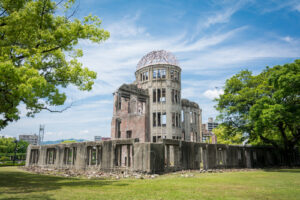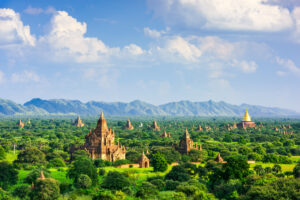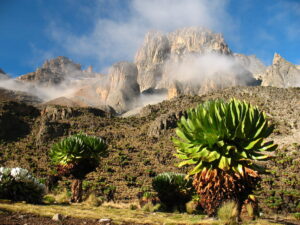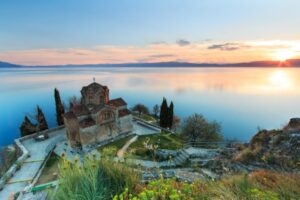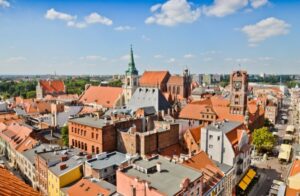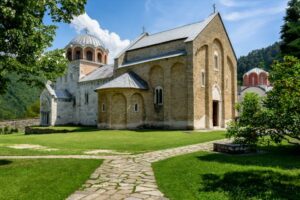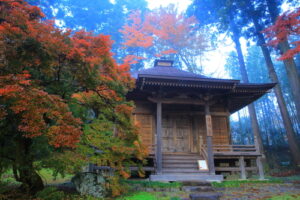| Registration Classification | cultural heritage |
| Registration Criteria | (6) |
| Year of registration | 1996 |
August 6, 1945, the day the world’s first atomic bomb was dropped. The Genbaku Dome is the only remaining structure in the vicinity of where the bomb was dropped. It has been carefully preserved by the citizens of Hiroshima to preserve its memory, which should not be forgotten by mankind. Thanks in part to their efforts, the site was registered as a World Heritage site in 1996 in the hope of world peace and the abolition of nuclear weapons.
Here, a World Heritage enthusiast explains why Genbaku Dome is a World Heritage Site in an easy-to-understand manner.Read this and you will definitely learn more about Genbaku Dome!
What is Hiroshima Peace Memorial (Genbaku Dome)? What kind of building was it originally?
What did Genbaku Dome originally look like? The official name is the Hiroshima Prefectural Industrial Promotion Hall
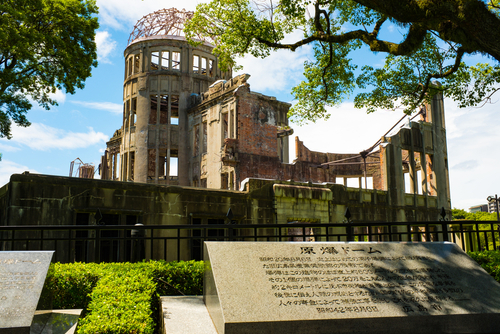
The construction now known as Genbaku Dome was once called the Hiroshima Products Exhibition Hall, designed by Czech architect Jan Retzl in 1910, and renamed the Hiroshima Prefecture Industrial Promotion Hall in 1915. The overall structure is three stories high, and the five-story dome architecture and murals show the influence of the Neo-Baroque style.In addition, detail decorations in the Sezession style were also seen, making it a modern building with a variety of architectural styles.
Why did the Genbaku Dome remain? What happened to the people inside?
What is inside Genbaku Dome?
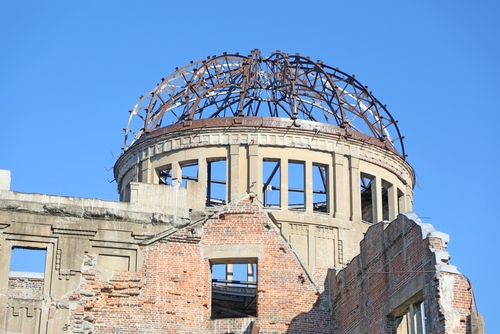


August 6, 1945, 8:15 am.The atomic bomb, dropped from the sky over Hiroshima by the U.S. B-29 bomber “Enola Gay,” exploded in the vicinity of the present-day Genbaku Dome. Almost all the buildings in the hypocenter area were obliterated, but this structure was the only one that remained. It is believed that there were Ministry of the Interior employees who were working in this building on the day of the bombing, all of whom were killed instantly. According to the list of names, there were approximately 30 people, but this is only the number stamped on the list, and it is assumed that the actual number of victims was much higher.
The construction, which was abandoned after the war, remains in the same condition as it was immediately after the explosion, and is called the “Genbaku Dome(Atomic Bomb Dome)” because the circular lid of the roof section looks like a dome. Because it was a structure with many windows, and the blast blew through the windows, its appearance remains today to the extent that its shape before the bombing is still recognizable. Although the interior is now off-limits, only some of the bricks of the building, the Greek-style Ionic columns, and the fountain in the Western-style garden remain, showing what the building looked like in those days.
When was the Atomic Bomb Dome registered as a World Heritage Site?
Registered in 1996 after a long period of activity
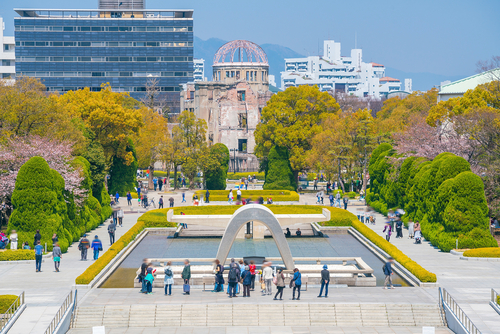


In 1950, construction of Peace Memorial Park began to surround the A-bomb Dome and was completed in 1964. The Peace Memorial Ceremony is held here every year on August 15.
In 1966, the Hiroshima City Council decided to permanently preserve Genbaku Dome, and in 1992, Hiroshima City asked UNESCO to nominate it for preservation, but the request was rejected. In 1995, the city was designated a National Historic Site, and on December 5, 1996, the Dome was registered as a World Cultural Heritage site.
For what reason is Hiroshima Peace Memorial (Genbaku Dome) registered as a World Heritage site?



What was the Atomic Bomb Dome evaluated for? The following points.
Registration Criteria (vi)
Genbaku Dome is a place that demonstrates the destructive power of the atomic bomb created by mankind and that it has existed as a symbol of world peace for over half a century.
Normally, the World Heritage listing criteria for (vi) by itself is unlikely to result in registration, and it is preferable to combine it with other criteria. The use of (vi) is quite exceptional, as ICOMOS (the advisory body to the World Heritage Committee) did not evaluate the building as a building, but rather its value as a monument to world peace.
Negative legacy



Although not officially defined by UNESCO, buildings and monuments that convey the tragic history of mankind, such as the “Auschwitz Concentration Camp,” are referred to as such. The A-bomb Dome is considered to belong to this category, but China and the U.S. have expressed concern about the registration of Genbaku Dome, although they do not deny it.
Conclusions and Thoughts of a World Heritage Maniac
A World Cultural Heritage site is usually recognized for its value as a building, but Genbaku Dome is a rather unusual heritage site because it is a World Heritage site registered under the registration criteria (vi). However, this is the place where the world’s first atomic bomb was dropped, an event that should not be forgotten by mankind. And the fact that Genbaku Dome has been preserved by people who wish for peace makes its “existence” worthwhile, as it has become a symbol of that event.
Incidentally… this Hiroshima Products Exhibition Hall is famous for the first baumkuchen sold in Japan by a German POW, Karl Joseph Wilhelm Juchheim. And he later opened a confectionery store in Yokohama.That is also the root of the present JUCHHEIM.
*The content here is a discussion derived from research by World Heritage enthusiasts.As for the data, interpretation differs depending on the medium.
